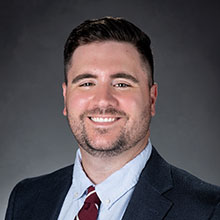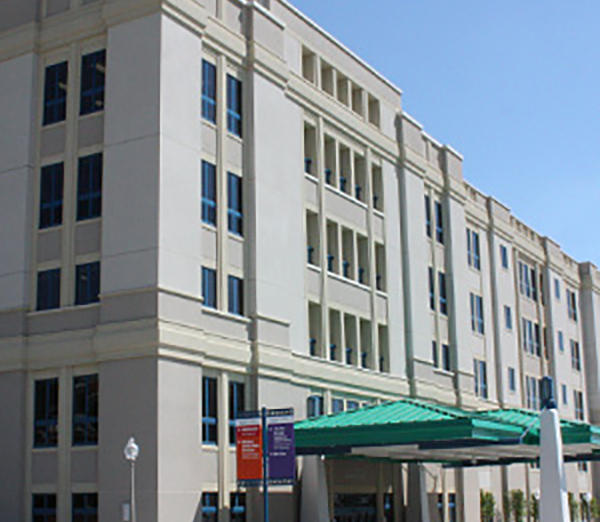Orthopedic Oncology
Children and adolescents with tumors of the bones or soft tissues of the extremities represent a relatively small, but uniquely challenging population of oncology patients. Here at Cook Children's, our orthopedic oncology team is commited to delivering the best care and most advanced treatments available.
Conditions treated
Bone and soft tissue tumors can be benign or malignant. Benign meaning they are not cancerous, and malignant meaning they are. When these tumors are cancerous they are called sarcomas. Cancer occurs when cells in the body divide without control or order. If cells keep dividing uncontrollably a mass of tissue forms. This is called a growth or tumor. The term cancer refers to malignant tumors, which can invade nearby tissues and spread to other parts of the body. There are three categories of bone and soft tissue sarcomas:
- Ewing sarcoma – This type of sarcoma can develop in both soft tissue and the bones, including the bones of the arms, ribs and pelvis.
- Osteosarcoma – This cancerous tumor of the bone can start in any bone, however, in children it most often begins near the knee, usually in the femur (thighbone) or tibia (shin bone). This type of sarcoma starts in the cells that are supposed to begin new bone growth and attacks the bone, weakening and ultimately destroying it. It is capable of spreading throughout the bones
- Soft tissue sarcomas – Soft tissue sarcomas form in the blood veins, lymph system, muscles, nerves, tendons and tissue around the joints. Basically, the affect the tissues that support the skeletal system. The most common type of soft tissue sarcoma is:
- Rhabdomyosarcoma – Usually starting in the muscles around the head, near the brain, in the bladder or those muscles in the arms or legs.
Other types of tissue sarcomas are very rare in children.
The causes of bone and tissue sarcomas aren't really certain. For some children, genetics may play a role. When children do get a bone or soft tissue cancer it usually occurs in older kids, teens and those entering young adulthood. It is rare that small children get them, though it is possible. The symptoms for these sarcomas vary depending on the type of disease, but most often will include one or many of the following:
- Pain at the tumor location
- Swelling or a lump at the location of the tumor
- Deep bone pain severe enough to wake you up
- Unexplained weight loss
- Fatigue
- Trouble breathing
- Fever or night sweats
- Broken bone for no reason or a minor bump
In order to determine the how to treat your child's cancer, tests must be done to determine what type of cancer your child has and what stage the cancer is. The doctor will ask about symptoms and medical history. A physical exam will be done. Additionally, your doctor may:
After cancer is diagnosed, staging tests are performed to find out if the cancer has spread and, if so, to what extent. Treatment for your child depends on the type, stage, and location of the cancer. It also depends on your child's overall health. Your doctor will talk with you about the best treatment plan for your child. Treatment options may include:
- Radiation therapy for bone cancer uses radiation to kill cancer cells and shrink tumors. Radiation may be:
- External radiation therapy – radiation directed at the tumor from a source outside the body
- Internal radiation therapy – radioactive materials placed into the body near the cancer cells
- Chemotherapy is the use of drugs to kill cancer cells. Chemotherapy may be given in many forms, including: pill, injection and via a catheter. The drugs enter the bloodstream and travel through the body, killing mostly cancer cells, but also some healthy cells. The most common chemotherapy drugs used to treat bone cancer include:
- Methotrexate with calcium
- Leucovorin
- Doxorubicin
- Cisplatin
- Ifosfamide
- Etoposide
- Surgery for bone cancer involves the removal of a cancerous tumor, nearby tissues, and possible nearby lymph nodes. Surgery may require amputation of the limb with cancer. Whenever possible, doctors try to remove the cancerous part of the bone without amputating. In this case, metal plates or a bone graft replaces the cancerous tissue that has been removed.
- Sometimes, adding radiation therapy or chemotherapy can help avoid the need for amputation. If the tumor is large or aggressive, or the risk of it spreading is high, chemotherapy and radiation therapy may be added to help prevent it from returning. This is also done to prevent it from spreading to distant organs.
- Myeloablative Therapy with Stem Cell Support. For cancer that has spread, intense chemotherapy is sometimes given to kill cancer cells. This therapy also destroys the bone marrow. Stem cells, which have the ability to develop into other types of cells, are then given to replace the lost bone marrow.
- Special Treatment Considerations for Certain Cancer Types:
- Osteosarcoma—Chemotherapy given before and after surgery will often cure osteosarcoma and can allow for limb-sparing surgery in people who might have otherwise required amputation.
- Ewing's sarcoma—Since Ewing's sarcoma is very responsive to chemotherapy, its treatment often involves several weeks of chemotherapy followed by surgical removal or radiation therapy, then several more months of chemotherapy.
- Fibrosarcoma and malignant fibrous histiocytoma—These conditions are usually treated with surgery to remove the cancerous tumor and a one-inch margin of healthy tissue surrounding it.
Meet a cancer patient with tons of heart:

We are here to help.
If your child has been diagnosed, you probably have lots of questions. We can help. If you would like to schedule an appointment, refer a patient or speak to our staff, please call our offices at 682-885-4007.
Ask a librarian
Finding health information you can trust can be confusing and overwhelming. Let us help. A Cook Children's librarian can send you up to date information from reliable sources concerning your child's condition, procedure, medicine or other health related questions.
Advance practice provider

Tate Hayes grew up in Sweetwater, TX and graduated from Texas A&M University in 2012 (Gig 'em!) with a Bachelor of Science in Nutritional Sciences. He started PA school at the University of North Texas Health Science Center in 2013 completed his Master in Physician Assistant Studies in 2016.
Tate has worked as a physician assistant in orthopedics for 8 years, with experience in adult and pediatric orthopedics. He has been a member of the Cook Children's Orthopedic Department since 2024 where he sees patients in the inpatient and outpatient setting as well as assisting in surgery. He works primarily with Dr. Mollabashy and Dr. Gilbert and provides clinical coverage at the Southwest and Dodson locations.
Tate resides in the mid-cities area with his wife, Tiffany, and two kids, and in his spare time, he enjoys spending time with family/friends, playing golf or traveling.
